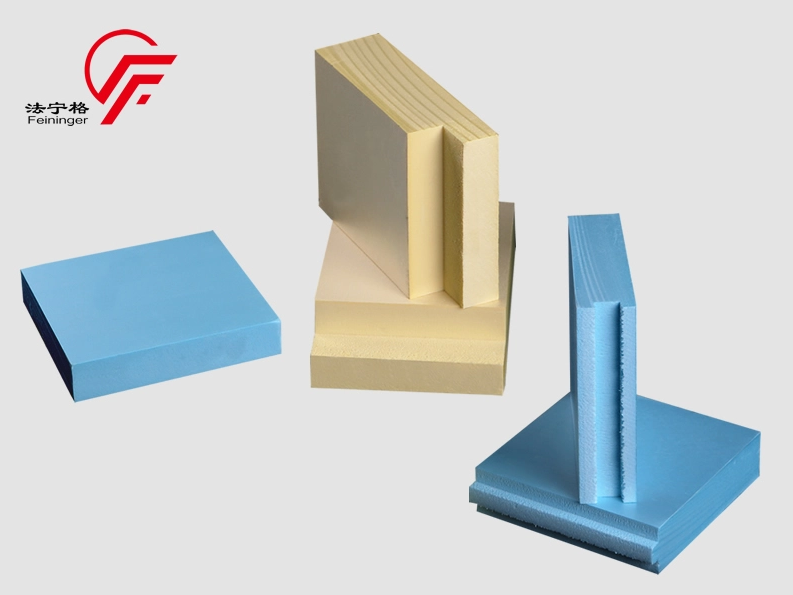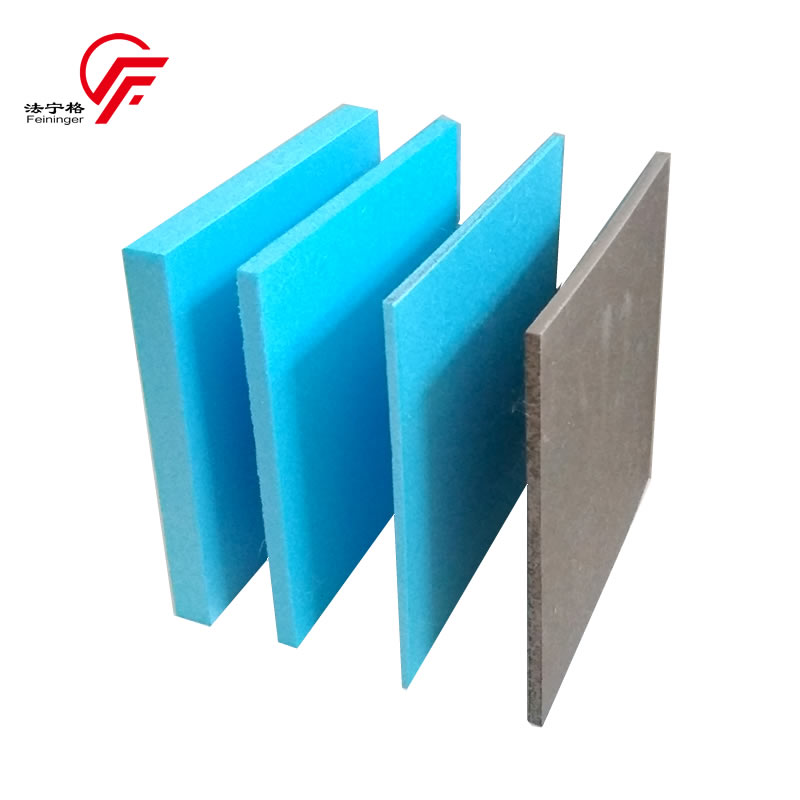When considering insulation materials for your building projects, one factor often stands out: moisture resistance. Whether you're dealing with a damp basement, an exterior wall exposed to the elements, or a foundation submerged in water, the ability of your insulation to resist moisture can make or break the long-term durability and effectiveness of your structure. Among all the insulation materials available, XPS extruded polystyrene is widely regarded as one of the best when it comes to handling moisture.

Why Moisture Resistance Matters in Insulation
1. Preventing Mold and Mildew Growth
When insulation materials absorb moisture, they become a breeding ground for mold and mildew. These fungi not only cause unpleasant odors and damage to the structure, but they can also compromise the indoor air quality, potentially leading to health issues. Insulation that resists moisture, like XPS, helps to prevent this by keeping the material dry and safe from the growth of these harmful organisms.
2. Maintaining Insulation Performance
The primary purpose of insulation is to reduce heat transfer, keeping a building warm in winter and cool in summer. However, when an insulation material absorbs water, its thermal performance can be severely compromised. Moisture-filled insulation loses its ability to resist heat flow, leading to higher energy costs and uncomfortable indoor temperatures. XPS extruded polystyrene ensures that moisture doesn’t interfere with its R-value, maintaining its effectiveness for years.
3. Protecting Structural Integrity
Moisture can weaken building materials over time, leading to corrosion, rot, or degradation of the foundation. When water seeps into unprotected areas, it can cause long-term structural damage. XPS’s ability to keep moisture at bay helps preserve the integrity of the building’s materials, preventing expensive repairs in the future.
XPS Extruded Polystyrene
XPS is made through an extrusion process where polystyrene beads are melted and then expanded into solid foam. This process results in a material with a closed-cell structure, meaning that the foam’s cells are tightly packed together and sealed off from one another. This characteristic is key to its moisture resistance.
Closed-Cell Structure: The Barrier to Water
In a closed-cell structure, each individual cell is isolated from the others, creating a solid barrier that prevents water from being absorbed. When water comes into contact with the surface of XPS, it cannot penetrate into the material because of the sealed cells. This makes it highly resistant to moisture and ensures that it doesn’t lose its insulating properties, even in wet conditions.

Low Water Absorption
In tests, XPS typically absorbs less than 0.3% of its weight in water. This incredibly low rate of absorption is one of the reasons why it’s such a reliable material for environments where moisture exposure is a concern. Even if the material is exposed to standing water for an extended period, it retains its integrity and effectiveness.
How Feininger XPS Products Stand Out
Feininger, a leading name in the production of XPS extruded polystyrene, provides high-performance solutions for those looking to protect their buildings from moisture damage. Feininger’s XPS products are known for their exceptional moisture resistance, durability, and superior thermal performance. The company's commitment to quality and innovation ensures that their XPS insulation meets the highest standards in the industry.
Feininger’s XPS boards are designed with a closed-cell structure that provides a strong barrier against moisture infiltration, making them an ideal choice for both residential and commercial applications. Whether you're insulating a basement, foundation, or exterior wall, Feininger’s XPS boards deliver the moisture protection and energy efficiency you need to keep your building safe and comfortable.
Comparing XPS to Other Insulation Materials in Moisture Resistance
While there are other insulation materials that offer some degree of moisture resistance, XPS is among the top performers. Here’s how it compares to other common options:
XPS vs. EPS (Expanded Polystyrene)
EPS, another type of polystyrene foam, also offers good thermal performance, but it’s not as moisture-resistant as XPS. This is due to the open-cell structure of EPS, which allows water to infiltrate more easily. While EPS can be treated with water-resistant coatings, it doesn’t naturally resist moisture to the same degree that XPS does.
XPS vs. Fiberglass Insulation
Fiberglass is a common insulation material, but it doesn’t hold up well in moist environments. When exposed to water, fiberglass can absorb it and lose its thermal resistance. Additionally, wet fiberglass can become a breeding ground for mold and mildew. XPS, on the other hand, is highly resistant to moisture and will continue to perform well even in damp conditions.
XPS vs. Spray Foam Insulation
Spray foam insulation is another popular choice, and it provides excellent moisture resistance as well. However, spray foam insulation requires proper installation and may not be as reliable if there are gaps or poor adhesion during the application. XPS is much easier to handle, with fewer installation challenges, and its moisture resistance is built in, making it a more consistent choice for many projects.
Applications Where Moisture Resistance of XPS Really Shines
XPS’s moisture resistance makes it a fantastic choice for areas where other insulation materials might struggle. Here are some common applications where XPS extruded polystyrene truly excels:
1. Basement Insulation
Basements are notoriously susceptible to moisture problems. Whether from ground moisture, flooding, or humidity, a basement can quickly turn into a damp, uncomfortable space. XPS extruded polystyrene is perfect for insulating basement walls and floors. Its moisture resistance keeps the insulation dry and free from mold or mildew, while also maintaining its thermal performance.
2. Foundation Insulation
When insulating a foundation, preventing water infiltration is critical. Waterlogged insulation can lead to structural damage, compromised insulation performance, and mold growth. XPS provides a reliable barrier against water, keeping your foundation dry and well-insulated for years to come.
3. Under Concrete Slabs
Insulating beneath concrete slabs is an important step in ensuring that your floors remain warm and energy-efficient. Concrete is naturally a good conductor of heat, and without proper insulation, you’ll lose valuable warmth through the ground. XPS is highly effective when placed under concrete slabs, providing both moisture resistance and thermal insulation, making sure your floors stay comfortable year-round.
4. Exterior Insulation in Wet Climates
In areas with heavy rainfall or high humidity, exterior insulation is essential for protecting the structure of a building. XPS is often used for exterior insulation systems, such as insulated concrete forms (ICFs), because it prevents water infiltration while maintaining the building’s energy efficiency.
How to Maximize the Moisture Resistance of XPS
While XPS is already highly moisture-resistant, there are a few best practices that can further enhance its performance in moisture-prone areas.
1. Proper Sealing
Even though XPS itself resists moisture, it’s still important to seal any seams or joints between panels. Using foam sealants or tape around the edges ensures there are no gaps where moisture could sneak in. This will also help maximize the thermal performance of your insulation.
2. Installation in Well-Ventilated Areas
While XPS is moisture-resistant, keeping the areas where it's installed well-ventilated can help reduce the risk of moisture build-up. Proper air circulation prevents condensation from forming, further protecting the insulation and the building.
3. Protection from Physical Damage
XPS is durable, but it’s important to avoid puncturing or compressing the material during installation. Damaged areas could potentially allow moisture to infiltrate the material. Use care when handling XPS to ensure it remains in top condition throughout the installation process.
Why XPS Extruded Polystyrene is Your Go-To for Moisture Resistance
If you're looking for an insulation material that can stand up to the challenges of moisture, XPS extruded polystyrene is the clear choice. Its closed-cell structure provides superior moisture resistance, keeping your home or building dry, comfortable, and energy-efficient. Whether you’re insulating a basement, foundation, or under concrete slabs, XPS is a reliable and durable solution that will stand the test of time.
With Feininger XPS products, you get the added assurance of high-quality, moisture-resistant insulation that meets the highest standards in the industry. Feininger continues to provide exceptional solutions for residential and commercial applications, ensuring that your building remains dry and well-insulated, no matter the conditions outside.

 Español
Español Pусский
Pусский
